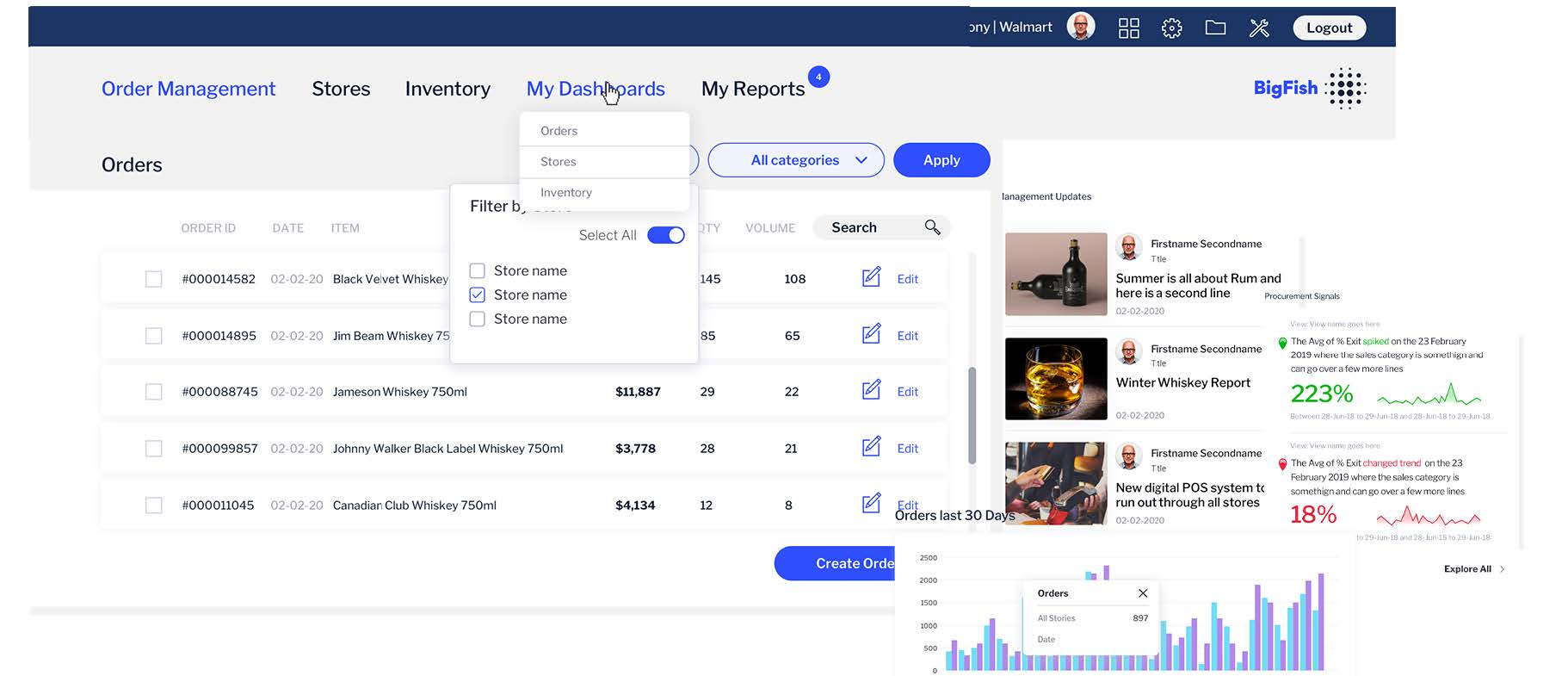
Top 3 Data and Analytics Trends to Prepare for in 2022
The past two years have seen significant disruption across sectors, markets and technology dynamics, forever changing the way businesses, workers, and customers use data.
But while global conditions have created uncertainty, it’s also driven more opportunities for organizations to optimize processes to respond faster to evolving customer demands, competitor shifts, and new risks - leveraging new, innovative data solutions.
Many upcoming and continuing trends in the data analytics space, from advancements in augmented and automated analysis to contextualized analytics, are helping businesses realize better value, enabling innovation, and meeting modern challenges head on.
In this article, we wanted to break down 3 big data and analytics trends for this year, why they are important to watch and prepare for, and how the Yellowfin embedded analytics software suite specifically can help you achieve your goals and prepare for these trends.
 Contextual analytics enables a deeper merger of analytics and the business applications they are embedded in to make our data more contextualized, dynamic and personalized for the benefit of end-users. As people do their normal work within their applications, they can click elements within their transactional environment to gain fast, instant context and relevant insights, without having to switch windows or applications to get data they need to make decisions.
In the past, most traditional business intelligence (BI) and analytics platforms have not been able to provide this level of context-driven analysis capability, but solutions like Yellowfin now leverage advanced techniques in automated business monitoring, natural language query (NLQ) and augmented analytics technologies to capture contextual information about datasets, users and analytics inputs to generate automated insights that are delivered to users in the form of accessible data stories, personalized news feeds and dynamic social media-style timelines - in addition to the dashboards, reporting and data visualization features they are already used to.
In Yellowfin, our combination of Signals (automated data discovery), Guided NLQ (true self-service BI) and Stories (data storytelling) provide organizations with fully automated insight generation using contextual-driven analytics tools, enabling everyone in the business, non-technical business users and skilled analysts, to consume and produce reports, dashboards and data visualizations, and understand the story behind the numbers without having to train in analytics beforehand. This is all part of the growing trend in shifting the focus of BI and analytics platforms from the experts only, to all business-focused users in gaining insight.
Contextual analytics enables a deeper merger of analytics and the business applications they are embedded in to make our data more contextualized, dynamic and personalized for the benefit of end-users. As people do their normal work within their applications, they can click elements within their transactional environment to gain fast, instant context and relevant insights, without having to switch windows or applications to get data they need to make decisions.
In the past, most traditional business intelligence (BI) and analytics platforms have not been able to provide this level of context-driven analysis capability, but solutions like Yellowfin now leverage advanced techniques in automated business monitoring, natural language query (NLQ) and augmented analytics technologies to capture contextual information about datasets, users and analytics inputs to generate automated insights that are delivered to users in the form of accessible data stories, personalized news feeds and dynamic social media-style timelines - in addition to the dashboards, reporting and data visualization features they are already used to.
In Yellowfin, our combination of Signals (automated data discovery), Guided NLQ (true self-service BI) and Stories (data storytelling) provide organizations with fully automated insight generation using contextual-driven analytics tools, enabling everyone in the business, non-technical business users and skilled analysts, to consume and produce reports, dashboards and data visualizations, and understand the story behind the numbers without having to train in analytics beforehand. This is all part of the growing trend in shifting the focus of BI and analytics platforms from the experts only, to all business-focused users in gaining insight.
 With BI vendors like Yellowfin increasingly offering low-code composition technology and collaborative tools as part of a ready-made package, more business users and business-centric technologists within organizations can build rich data and analytics-infused applications within the business process faster, shifting application development away from just the experts, bridging the gap between insight and action and decrease challenges with business outcomes, which is a problem with traditionally fragmented embedded analytics model deployed by IT. More business users will then be able to adopt these built capabilities for agile decision-making.
With BI vendors like Yellowfin increasingly offering low-code composition technology and collaborative tools as part of a ready-made package, more business users and business-centric technologists within organizations can build rich data and analytics-infused applications within the business process faster, shifting application development away from just the experts, bridging the gap between insight and action and decrease challenges with business outcomes, which is a problem with traditionally fragmented embedded analytics model deployed by IT. More business users will then be able to adopt these built capabilities for agile decision-making.
Blog Contents
hide
Trend #1 - Context-driven analytics
Context-driven analytics and artificial intelligence (AI) models will replace 60% of existing models built on traditional data by 2025, and augment people’s decision-making, according to Gartner. Businesses today are inundated with a wealth of complex data from multiple sources, including text, audio, image, and associated metadata. Organizations need all these layers of information made available and structured in a way that proactively identifies and offers users context around the similarities, relationships and relevance of that information, and enables users a way to make informed decisions at the point-in-time they access that data. This is called contextual analytics, also known as contextual BI. Contextual analytics enables a deeper merger of analytics and the business applications they are embedded in to make our data more contextualized, dynamic and personalized for the benefit of end-users. As people do their normal work within their applications, they can click elements within their transactional environment to gain fast, instant context and relevant insights, without having to switch windows or applications to get data they need to make decisions.
In the past, most traditional business intelligence (BI) and analytics platforms have not been able to provide this level of context-driven analysis capability, but solutions like Yellowfin now leverage advanced techniques in automated business monitoring, natural language query (NLQ) and augmented analytics technologies to capture contextual information about datasets, users and analytics inputs to generate automated insights that are delivered to users in the form of accessible data stories, personalized news feeds and dynamic social media-style timelines - in addition to the dashboards, reporting and data visualization features they are already used to.
In Yellowfin, our combination of Signals (automated data discovery), Guided NLQ (true self-service BI) and Stories (data storytelling) provide organizations with fully automated insight generation using contextual-driven analytics tools, enabling everyone in the business, non-technical business users and skilled analysts, to consume and produce reports, dashboards and data visualizations, and understand the story behind the numbers without having to train in analytics beforehand. This is all part of the growing trend in shifting the focus of BI and analytics platforms from the experts only, to all business-focused users in gaining insight.
Contextual analytics enables a deeper merger of analytics and the business applications they are embedded in to make our data more contextualized, dynamic and personalized for the benefit of end-users. As people do their normal work within their applications, they can click elements within their transactional environment to gain fast, instant context and relevant insights, without having to switch windows or applications to get data they need to make decisions.
In the past, most traditional business intelligence (BI) and analytics platforms have not been able to provide this level of context-driven analysis capability, but solutions like Yellowfin now leverage advanced techniques in automated business monitoring, natural language query (NLQ) and augmented analytics technologies to capture contextual information about datasets, users and analytics inputs to generate automated insights that are delivered to users in the form of accessible data stories, personalized news feeds and dynamic social media-style timelines - in addition to the dashboards, reporting and data visualization features they are already used to.
In Yellowfin, our combination of Signals (automated data discovery), Guided NLQ (true self-service BI) and Stories (data storytelling) provide organizations with fully automated insight generation using contextual-driven analytics tools, enabling everyone in the business, non-technical business users and skilled analysts, to consume and produce reports, dashboards and data visualizations, and understand the story behind the numbers without having to train in analytics beforehand. This is all part of the growing trend in shifting the focus of BI and analytics platforms from the experts only, to all business-focused users in gaining insight.
Trend #2 - Low code, business-centric BI development tools
50% of embedded analytics content will be developed by business users leveraging a low-code, no-code modular assembly experience, according to Gartner. In the past, building custom analytics tool sets or embedding analytics into a business application or workflow demanded traditional developer and IT-led experience and capabilities, such as API and developer software development kits (SDKs). This approach has often been expensive, time-consuming and requires significant technical expertise, which many organizations don’t have, or can’t take source from their existing in-house teams, as it takes resources away from their focus on the core product or service. With BI vendors like Yellowfin increasingly offering low-code composition technology and collaborative tools as part of a ready-made package, more business users and business-centric technologists within organizations can build rich data and analytics-infused applications within the business process faster, shifting application development away from just the experts, bridging the gap between insight and action and decrease challenges with business outcomes, which is a problem with traditionally fragmented embedded analytics model deployed by IT. More business users will then be able to adopt these built capabilities for agile decision-making.
With BI vendors like Yellowfin increasingly offering low-code composition technology and collaborative tools as part of a ready-made package, more business users and business-centric technologists within organizations can build rich data and analytics-infused applications within the business process faster, shifting application development away from just the experts, bridging the gap between insight and action and decrease challenges with business outcomes, which is a problem with traditionally fragmented embedded analytics model deployed by IT. More business users will then be able to adopt these built capabilities for agile decision-making.